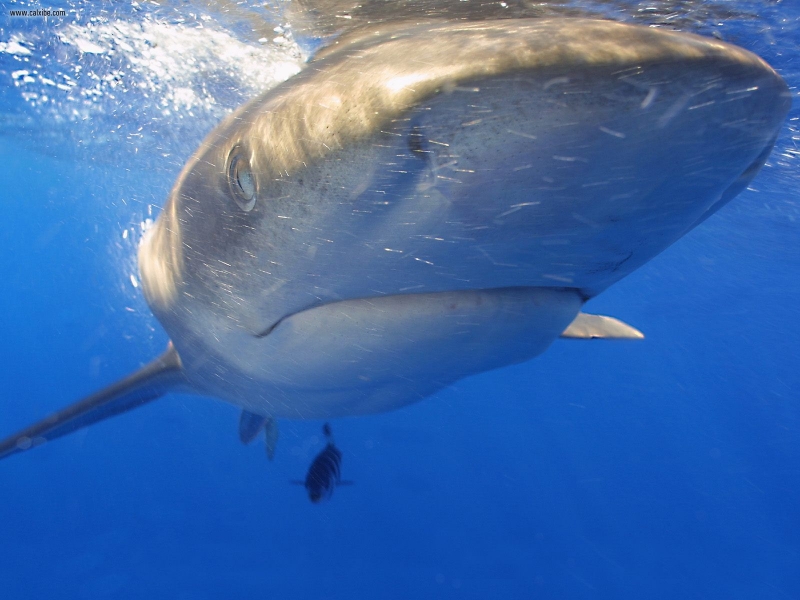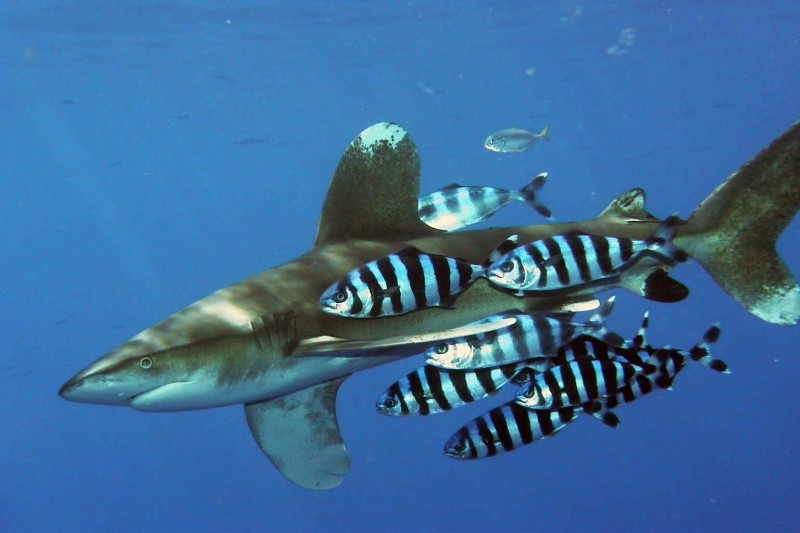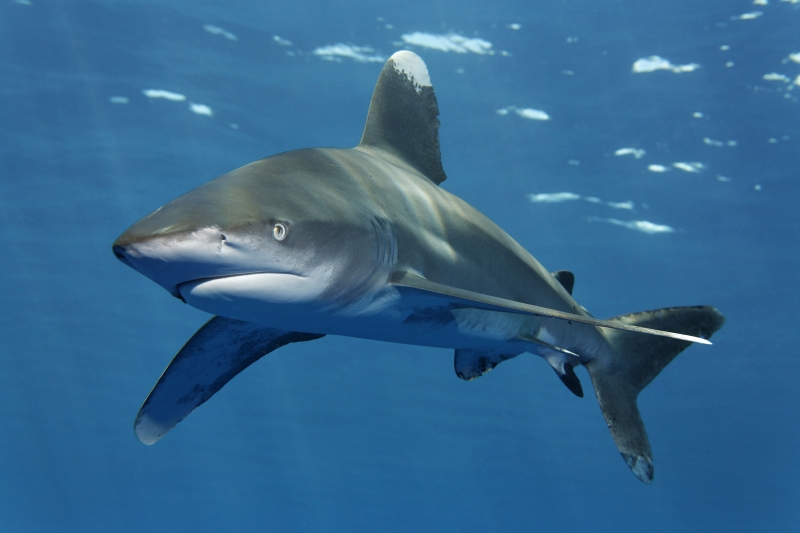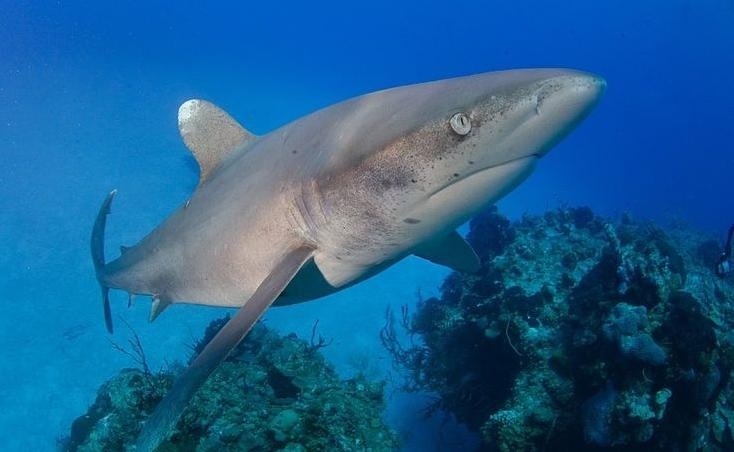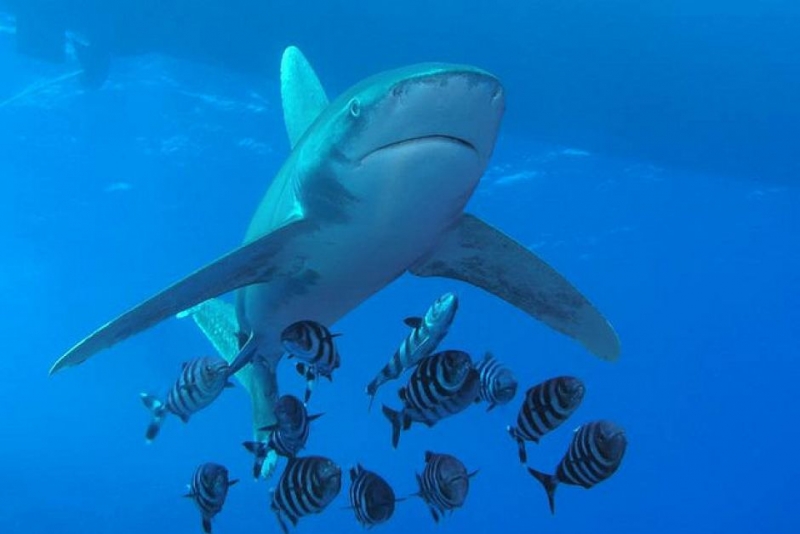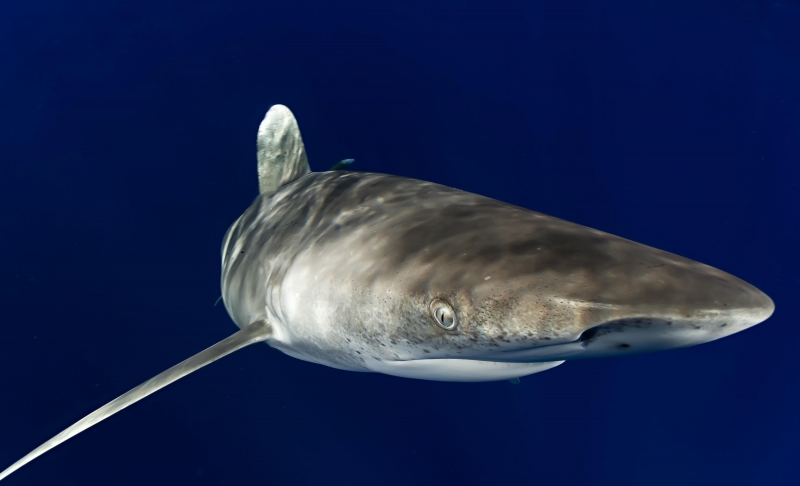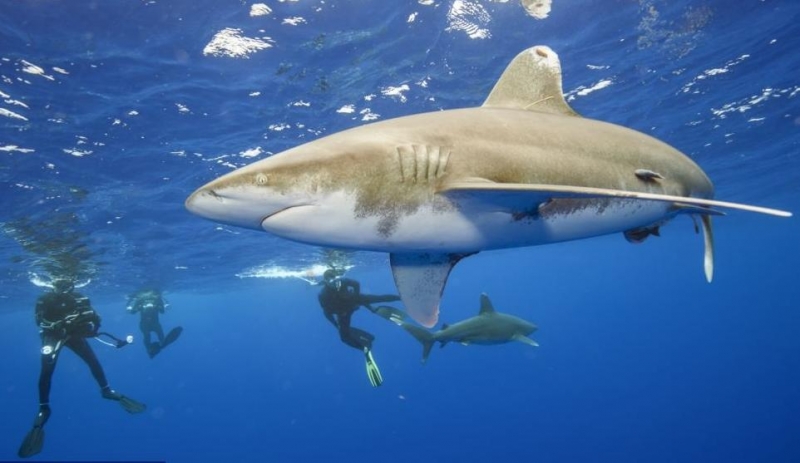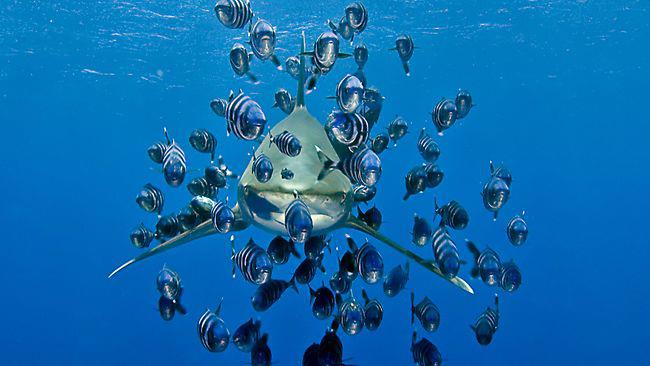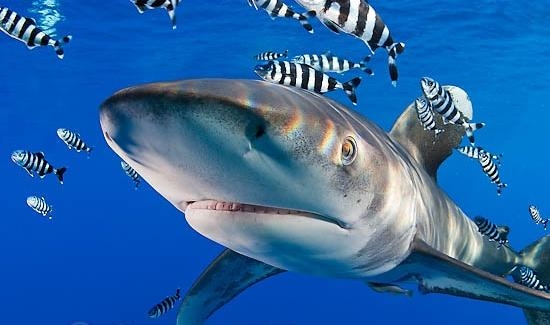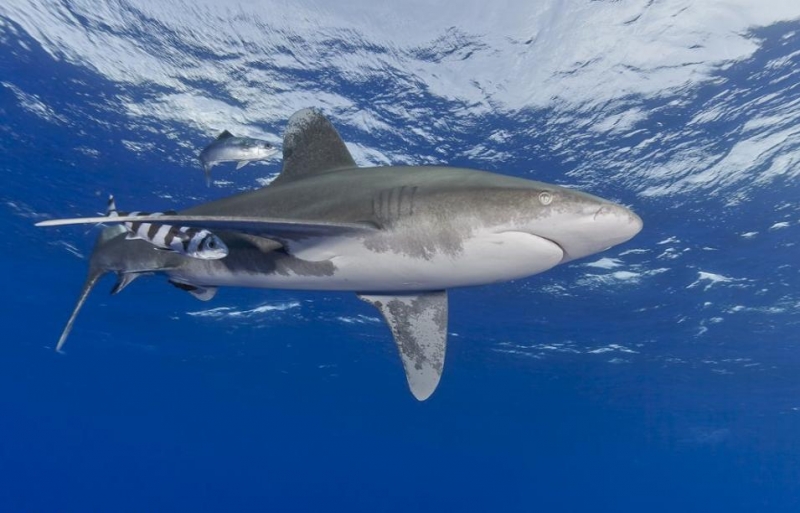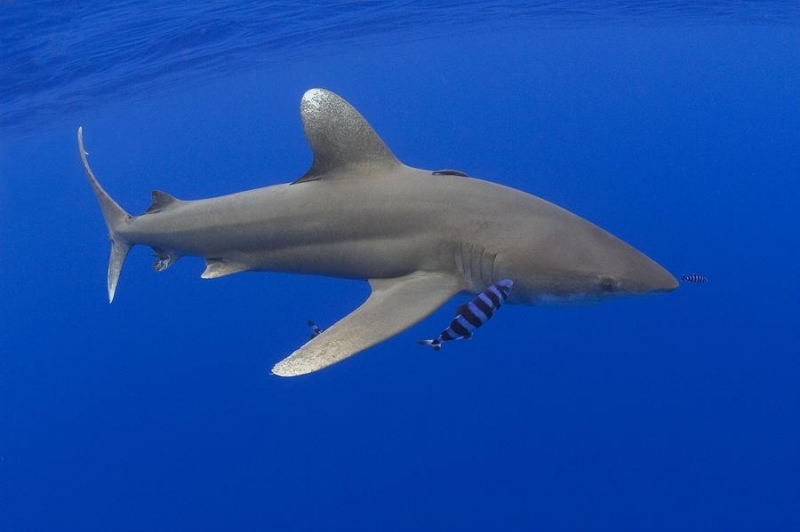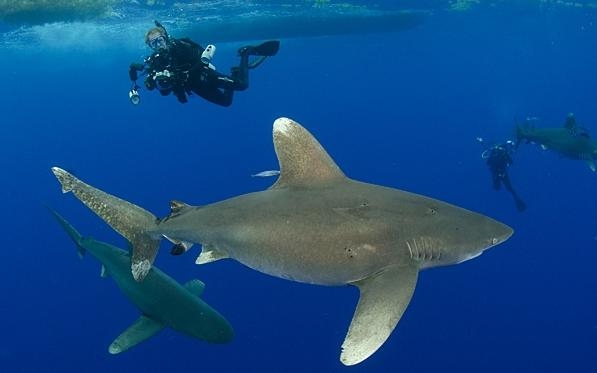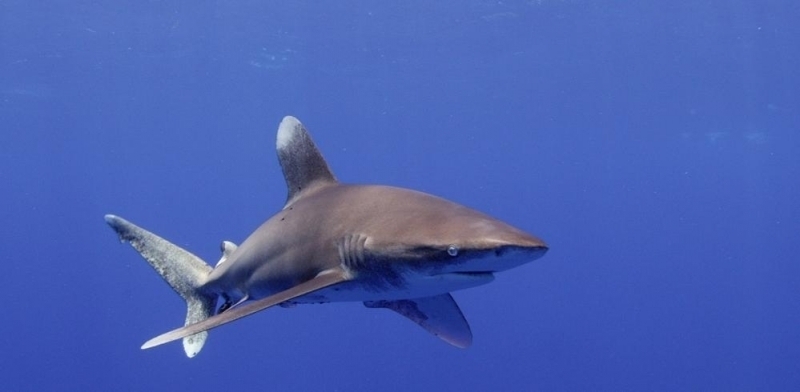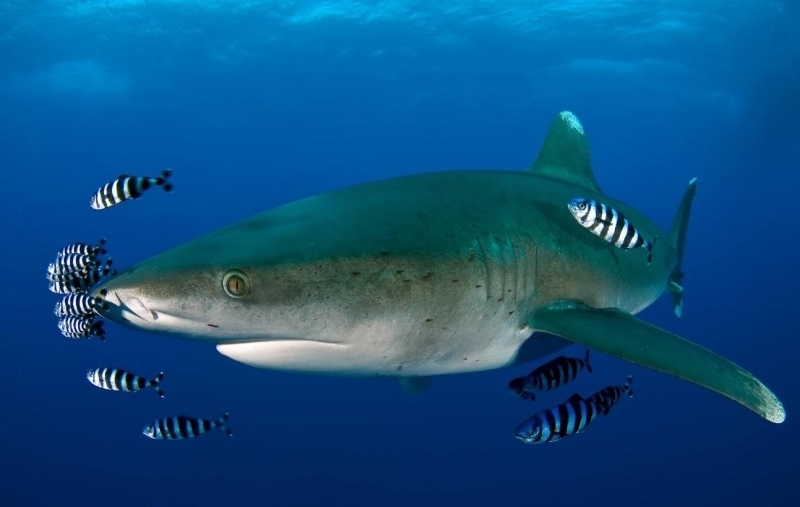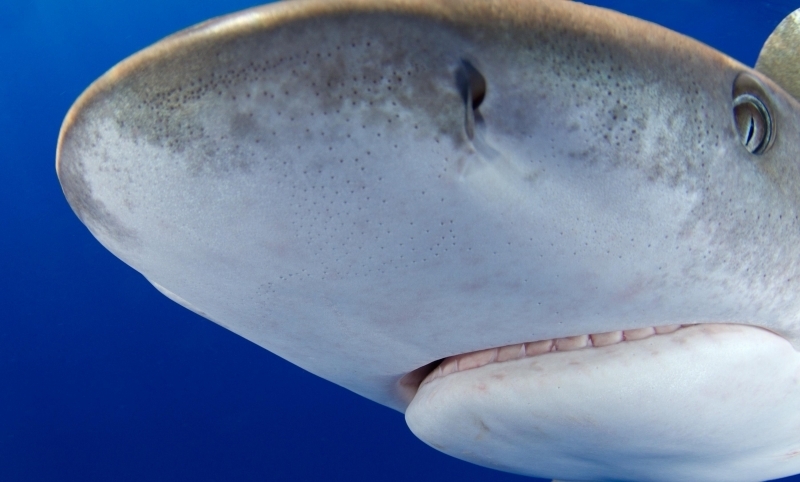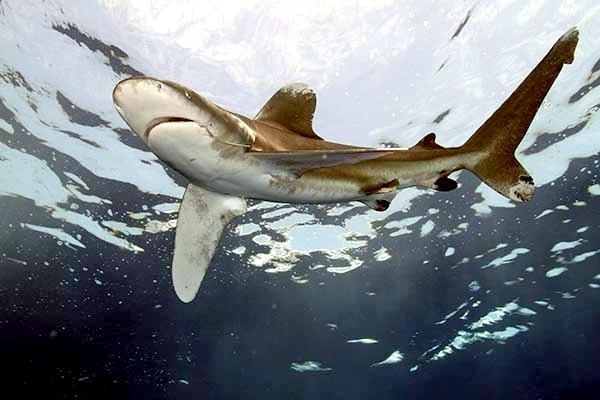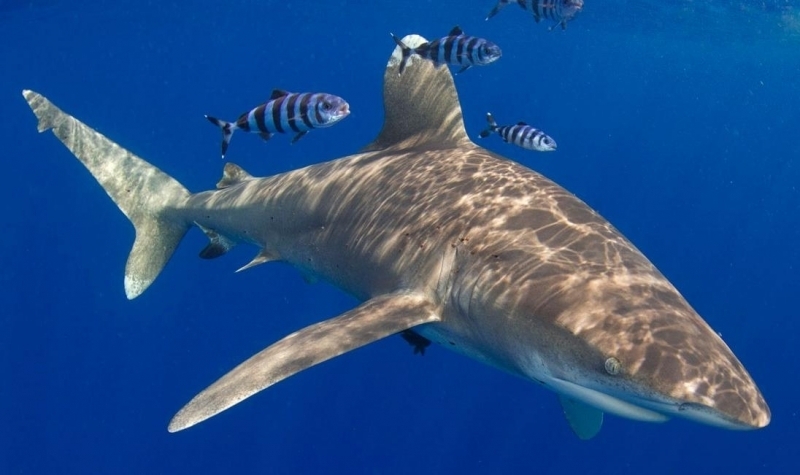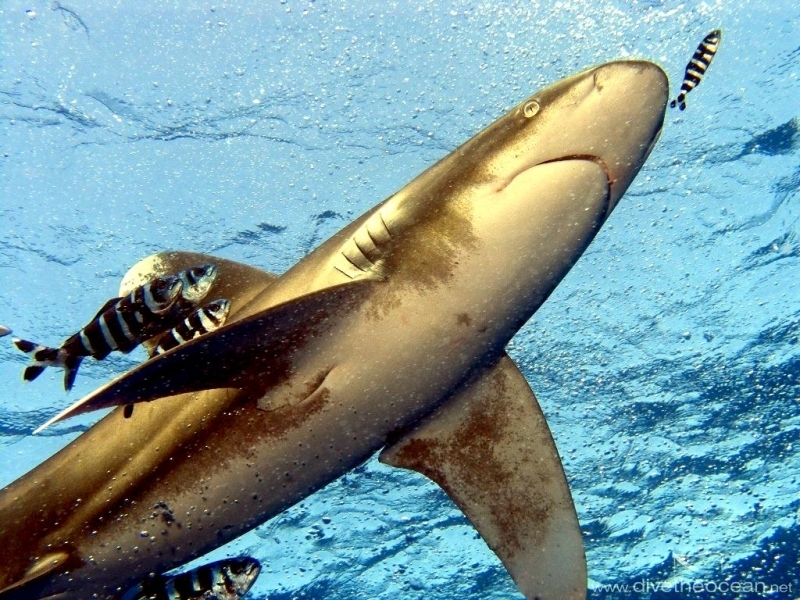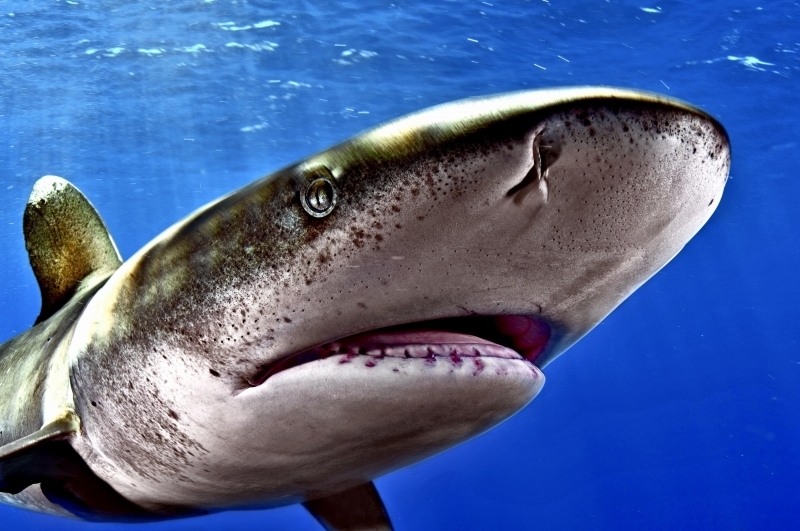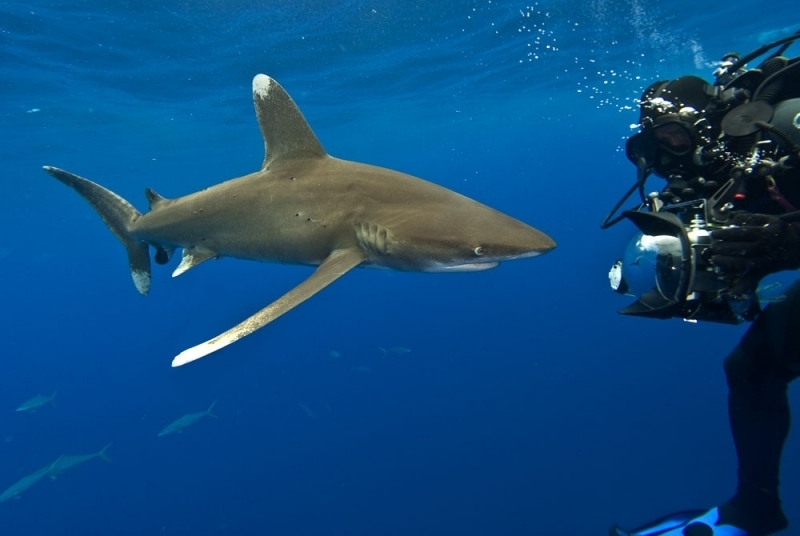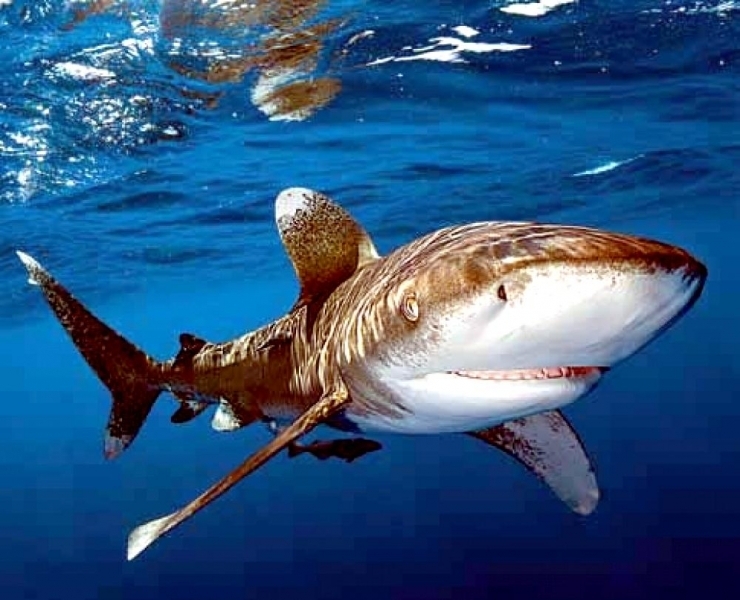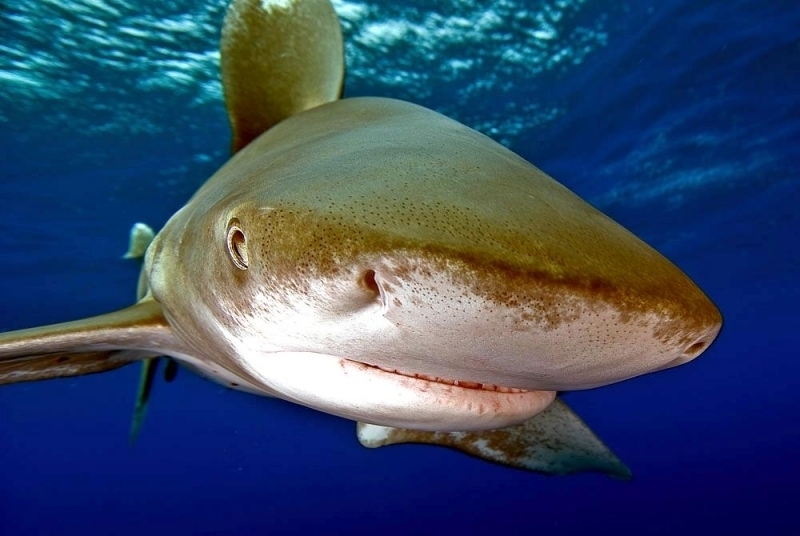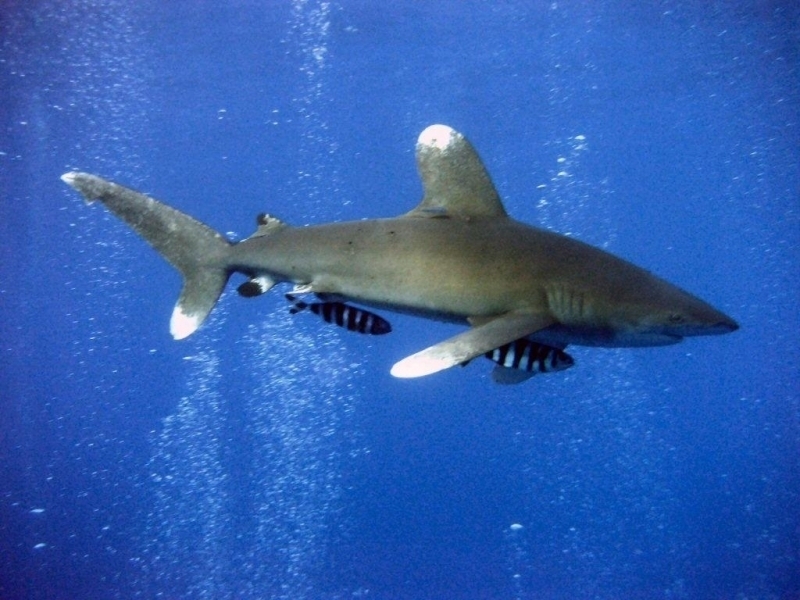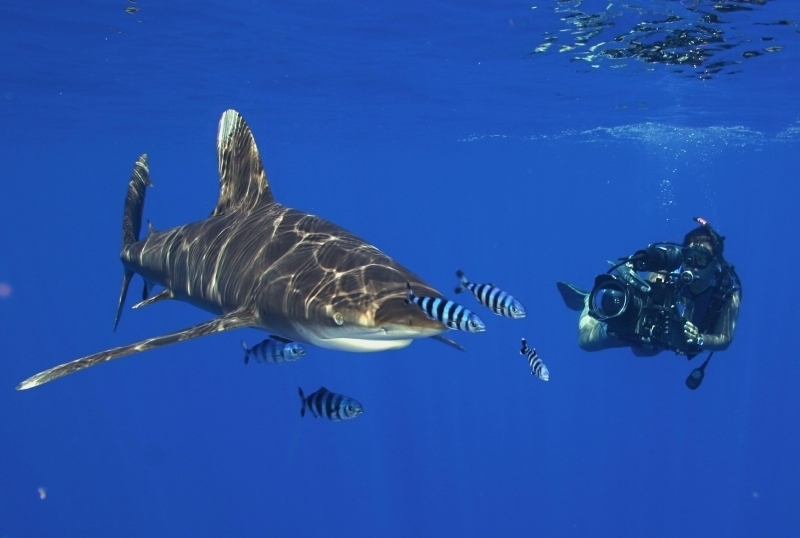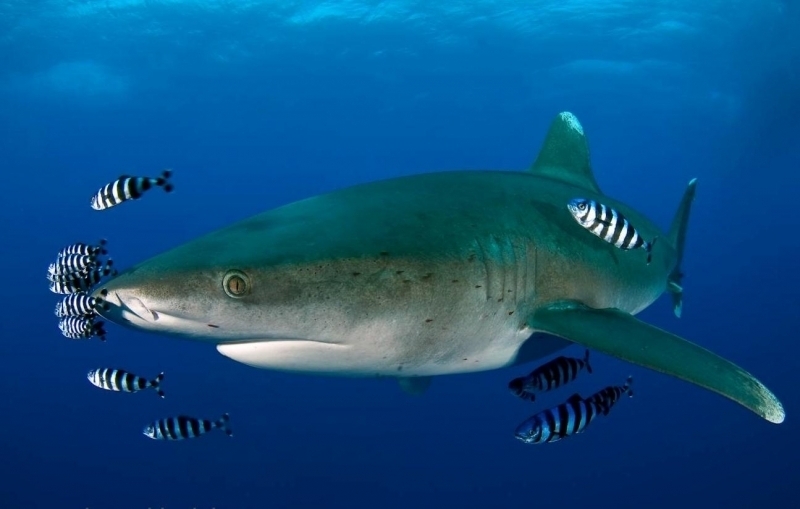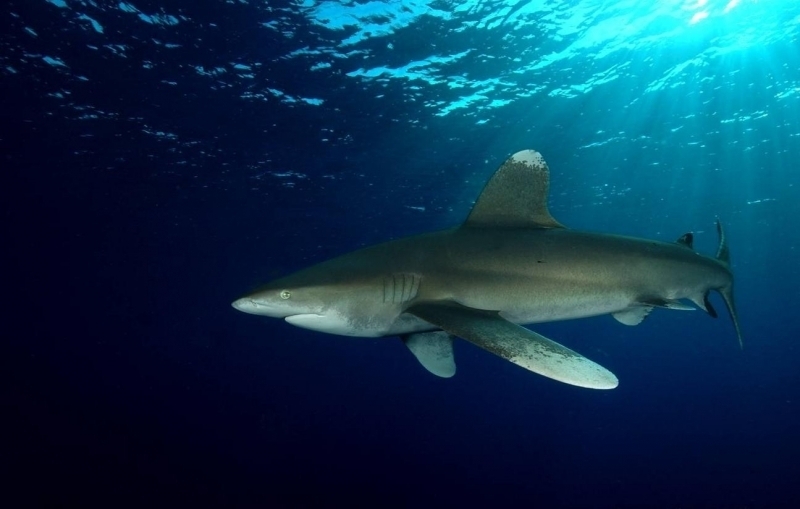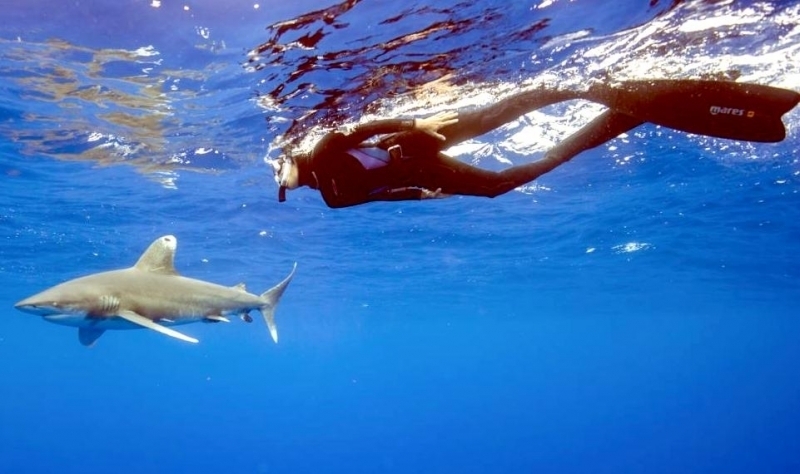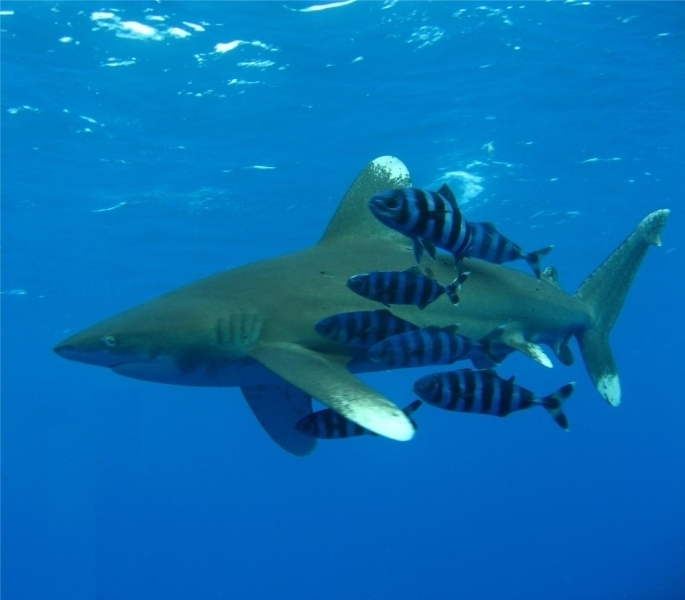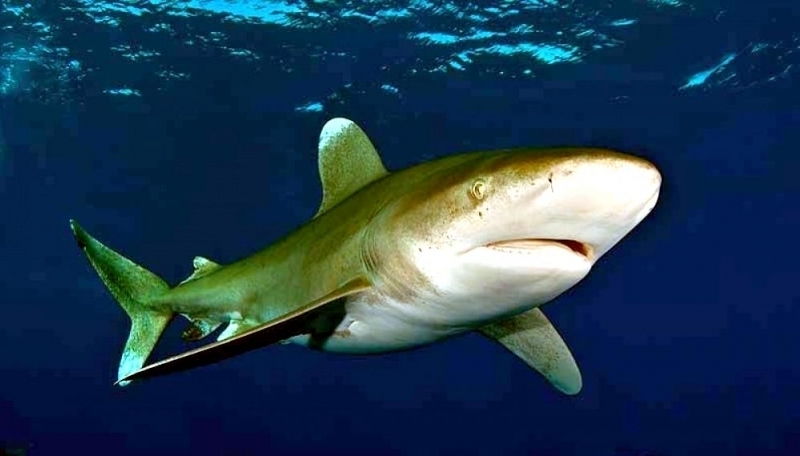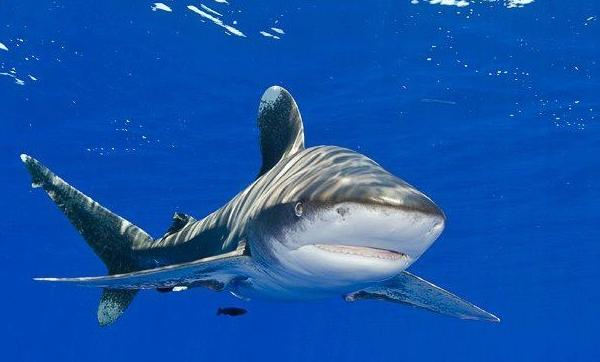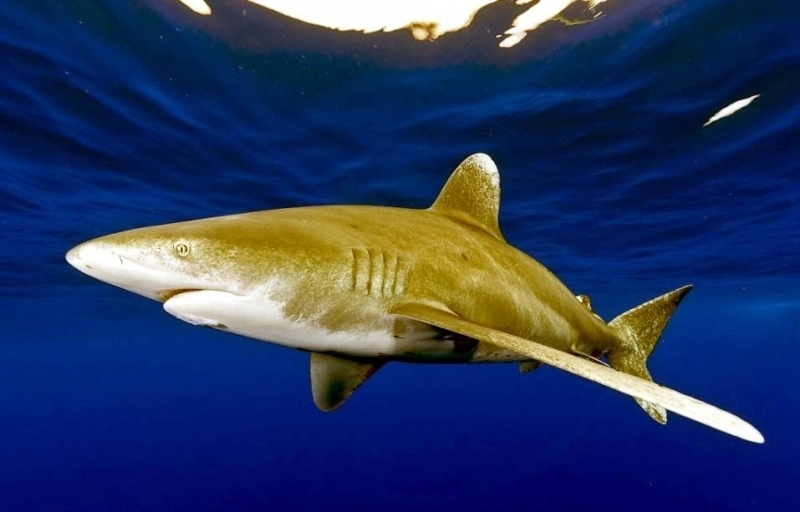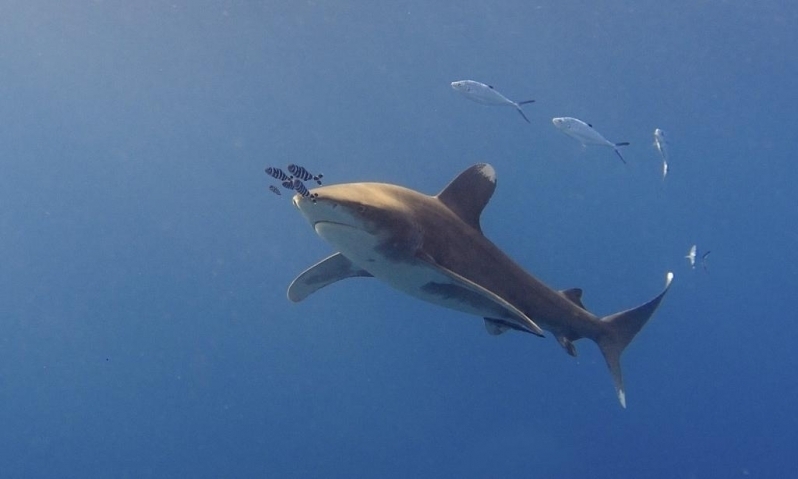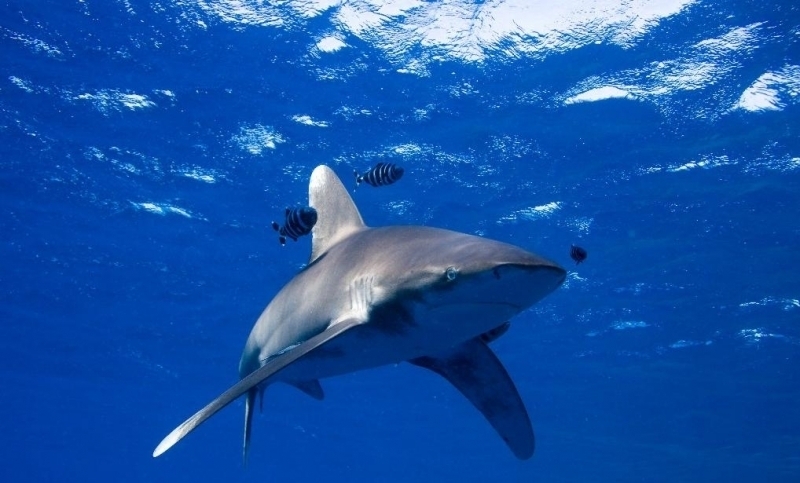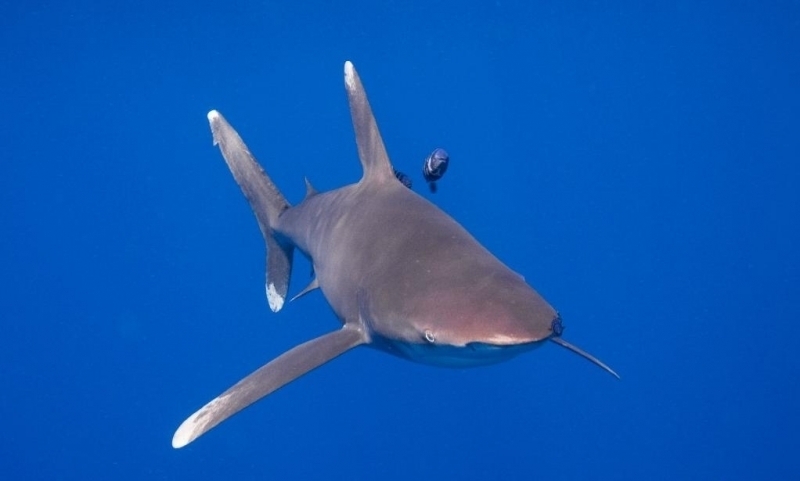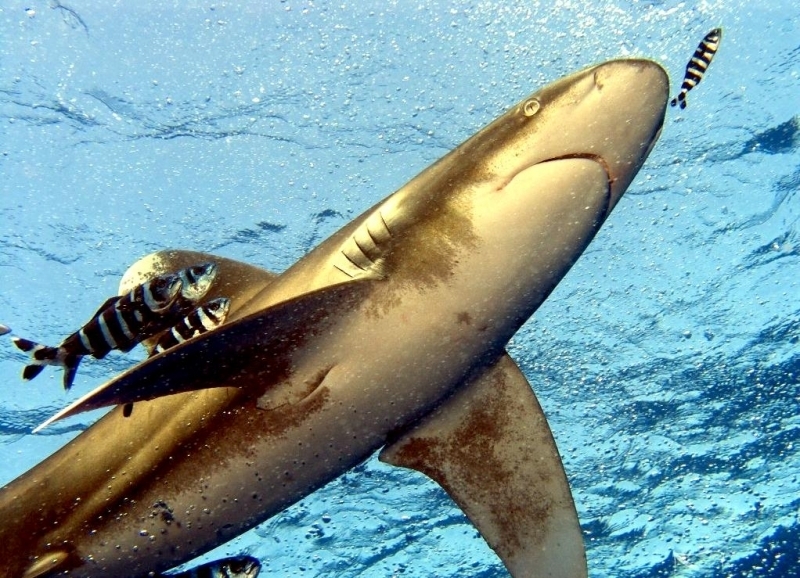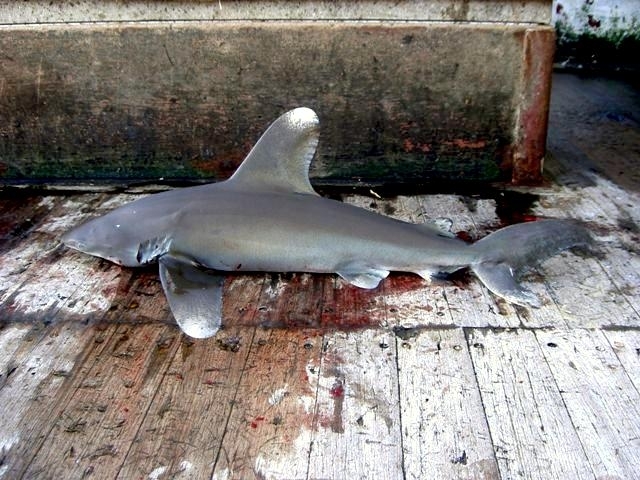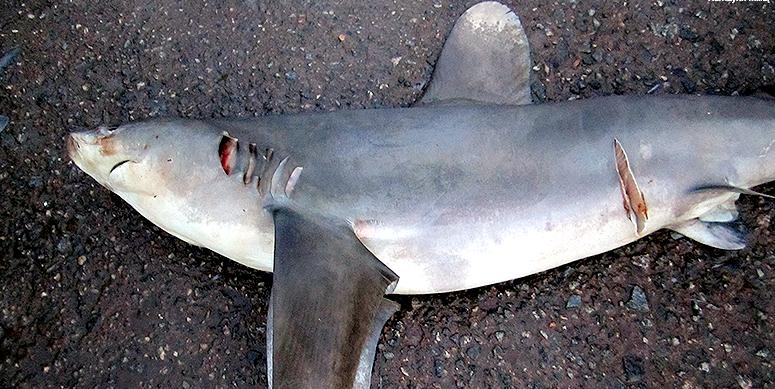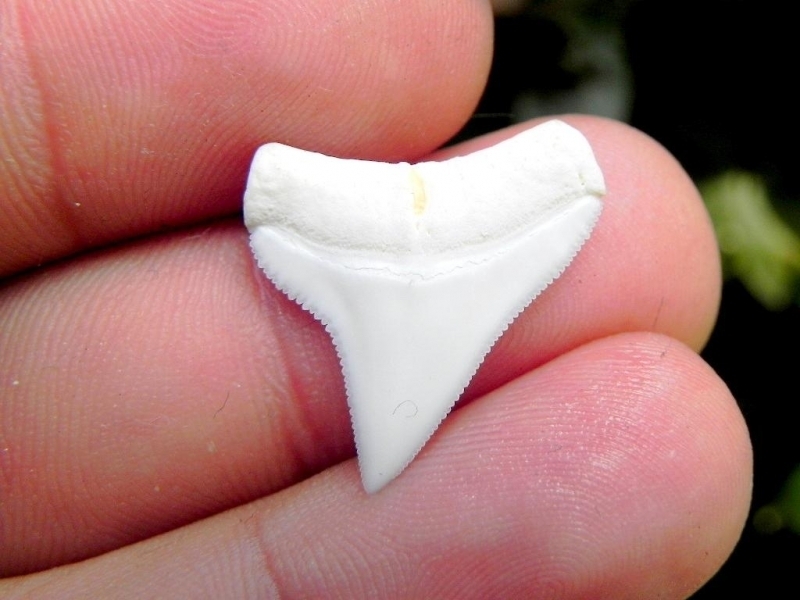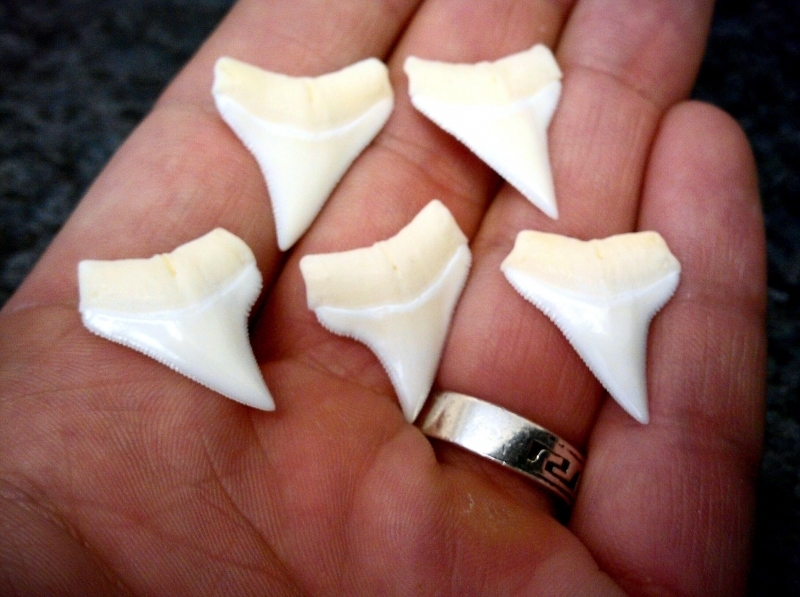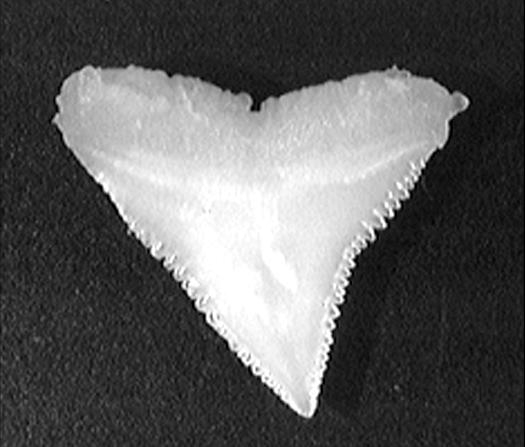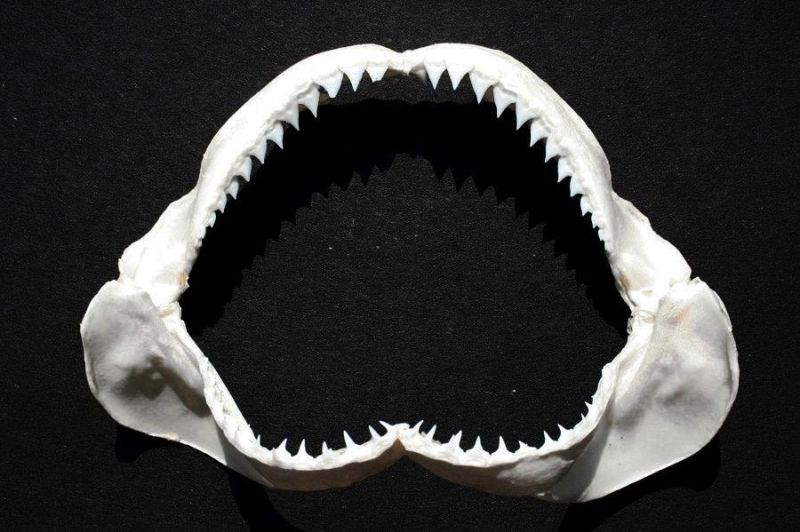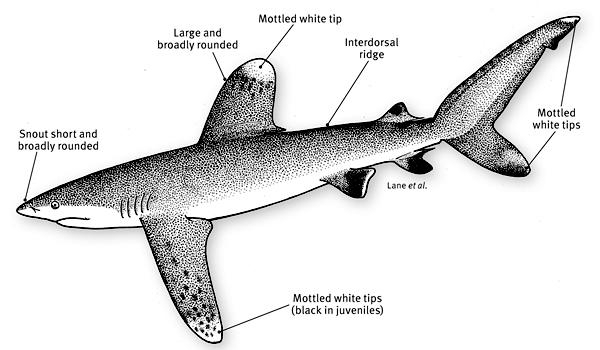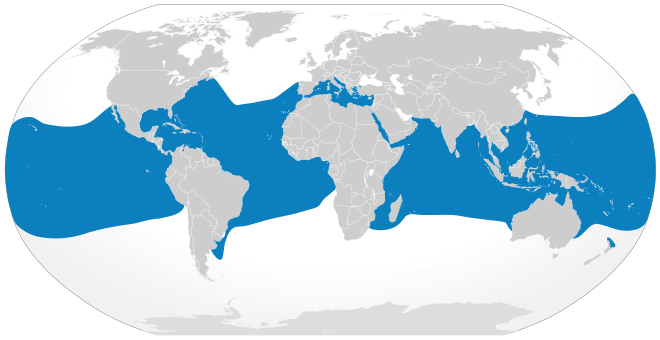“Carcharhinus longimanus”
Oceanic Whitetip Sharks are large stocky sharks with a huge, rounded first dorsal fins and long, wide-tipped pectoral fins. Their snouts are blunt and rounded; their upper teeth are triangular and they have an inter-dorsal ridge. The Oceanic Whitetip Shark’s dorsal side (upper) is usually dark gray with a bronze tinge, sometimes brown or blue and their ventral (lower) side is white, sometimes with a yellow tinge and the tips of their first dorsal, pectorals and lower lobe of their caudal (tail) fins are often white or have white spots. The Oceanic Whitetip Shark’s ventral surface of their pelvic fins, apices (tips) of anal and second dorsal fins and ventral lobe of the caudal fin often have black spots and black or dusky saddle-marks are found in front of their second dorsal fin and along the upper margin of their caudal fin. They grow up to 4 meters in total length with a maximum weight of 168 kilograms and age of 22 years. Oceanic Marine Biologists consider this shark the most potentially dangerous after only the Great White Shark, Tiger Shark & Bull Shark especially for open-ocean divers. This species is likely responsible for open-ocean attacks following air or sea disasters. Oceanic Whitetip Sharks can be very aggressive and unpredictable in the presence of potential prey.
Oceanic Whitetip Sharks are an oceanic deep-water species which sometimes comes close to shore. They are found from the surface to depths of at least 150 meters. They are frequently accompanied by Remoras, Pilot Fish and various sea turtles. Oceanic Whitetip Sharks are often found swimming with big pods of Short-finned Pilot Whales and often follow the whales when they dive down into the depths. The reason Oceanic Whitetip Sharks hang around whales is not known, but it is presumed that the sharks follow the whales to feed on squid found at depth by the whales. This behavior likely occurs in Hawaiian waters and other areas where Short-finned Pilot Whales and Oceanic Whitetip Sharks share habitat. Oceanic Whitetip Sharks are a highly migratory species. They feed on oceanic bony fishes, including tuna, mahi-mahi, stingrays, sea turtles, seabirds, snails, squid, crustaceans, mammal carrion and sometimes even ship garbage. There is a pronounced partial segregation by size & sex in some areas. The females are viviparous; litter size 1-15 pups; 60-65 centimeters at birth. Distinct pairing with embrace. This is an active, almost fearless shark which is also associated with human attacks resulting in death.
